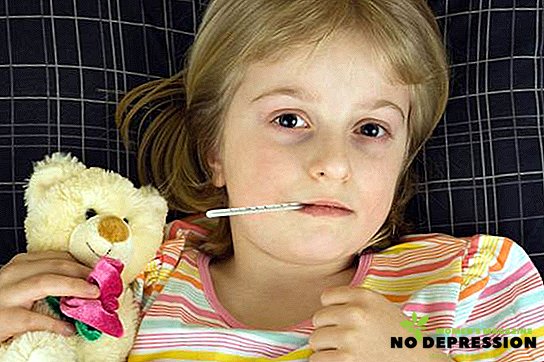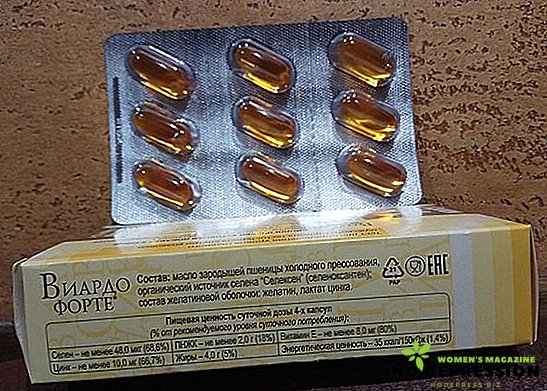An infection such as mononucleosis was first discovered in 1885. This is an acute infectious disease, the main characteristics of which are enlargement of the liver and spleen, changes in the composition of the blood. At the same time, the virus itself after it enters the body remains in it forever and can again manifest itself with a decrease in immunity.

Determine the disease by symptoms
Most often, this disease affects children under 10 years of age. This usually happens this way: the child, being in a closed collective (kindergarten or school), is infected by the patient "colleague", since mononucleosis is transmitted through saliva. Although it is not very contagious and can only be transmitted through close contact, because the virus dies very quickly when released into the environment.
That moment is remarkable, that boys are more susceptible to this disease (almost twice) than girls.
Moreover, many people may not experience any symptoms, but at the same time they are carriers of the virus. The incubation period is from 5 to 15 days, but in some cases it can be about 45 days.
In order to start a proper treatment in time, it is necessary to learn how to identify the main symptoms of the disease. You can try to prevent the disease, but this is only possible if you are sure that someone from his class or group in the garden has become infected. In this case, you should carefully monitor the condition of the baby in order to start treatment in time if necessary.
The most frequent symptoms are fever, chills, malaise, and sometimes catarrhal symptoms appear. The temperature rises very quickly, there is sore throat in the throat, nasal congestion is observed, it is difficult to breathe. A characteristic symptom for this disease is hyperemia of the pharyngeal mucosa and the growth of the tonsils.
 In some situations, the child falls asleep healthy, and wakes up sick with mononucleosis, this is manifested in the following:
In some situations, the child falls asleep healthy, and wakes up sick with mononucleosis, this is manifested in the following:
- fever at which the temperature can reach +39 degrees;
- increased sweating;
- drowsiness;
- symptoms of poisoning - headaches, aching bones.
Further, the disease enters a climax phase when the main symptoms appear, including:
- a sore throat when grit forms on the pharyngeal mucosa;
- enlarged spleen and liver;
- rash (on the abdomen, legs, back).
But the most famous and frequent symptom of this disease can be called polyadenitis, which occurs as a result of hyperplasia of lymphoid tissue, as a result of which white or gray deposits appear on the palate and tonsils. The lymph nodes are also enlarged, as this is where the virus lingers.
It is important to note that with mononucleosis, the spleen can greatly increase, and in some cases it grows so that it eventually leads to rupture of the organ.
Diagnosis and treatment
To confirm the diagnosis, first the doctor prescribes the following tests:
- General and advanced blood tests.
- A blood test for the presence of antibodies to the virus.
- Ultrasound of the internal organs.
 It should be noted that the doctor will not be able to determine the presence of a virus in the body, since for many of the symptoms this disease is similar to angina, therefore, serological examinations should be carried out. In addition, when the appearance of characteristic symptoms should visit the otolaryngologist.
It should be noted that the doctor will not be able to determine the presence of a virus in the body, since for many of the symptoms this disease is similar to angina, therefore, serological examinations should be carried out. In addition, when the appearance of characteristic symptoms should visit the otolaryngologist.
To date, there is no general treatment regimen for this disease in medicine, and there is also no specific drug that helps fight the virus. Most often he is treated at home and only when the onset of severe symptoms of the child is put on treatment in the hospital.
There are the following indications that require immediate hospitalization:
- Increased temperature up to +39.5 degrees.
- Severe symptoms of severe poisoning.
Therapy for mononucleosis is aimed at relieving all symptoms. The following medications may be prescribed:
- antipyretics, such as Ibuprofen;
- antiseptic preparations to help cope with a sore throat;
- drugs to improve immunity (Imudon).
It is also necessary to carry out a general strengthening therapy - taking vitamins, especially groups B and C. With an increase in the size of the liver, a special diet is prescribed, cholagogue preparations are prescribed.
Due to the fact that with mononucleosis, the secondary microbial flora is often added, antibiotics can be prescribed, but they are prescribed only with a strong inflammatory process. At the same time, probiotics are prescribed. In case of severe hypertoxic flow, Prednisolone may be prescribed. With a strong swelling of the larynx, you need to install a tracheostomy.
What can mononucleosis
It should be noted that infectious mononucleosis usually ends quite well. But in order to avoid serious consequences, it is very important to determine the disease in time and start its treatment. The most important point in this is the determination of the level of white blood cells and regular monitoring of this indicator. In addition, it is important to monitor the condition of the child and after his recovery.
Thus, according to clinical studies in which 150 people participated, the following picture was observed after recovery:
- Normally, if the temperature at the level of +37.5 degrees will persist in 2-3 weeks after the disease.
- Sore throat and sore throat can last for the next several weeks.
- Lymph nodes will return to normal within the next 3-4 weeks.
- Drowsiness, general weakening of the body can continue for another six months.
That is why children who have been ill with mononucleosis need to be examined over the next year to control residual effects in the blood.
But complications occur very rarely, but the most common problems are:
- rupture of the liver (occurs in one case out of 1000);
- development of secondary streptococcal infection;
- the occurrence of meningoencephalitis, which is manifested by an increase in tonsils, hepatitis.
That is why it is so important when the first symptoms manifest to consult a doctor and begin the correct treatment, only in this case the absence of complications can be guaranteed.












